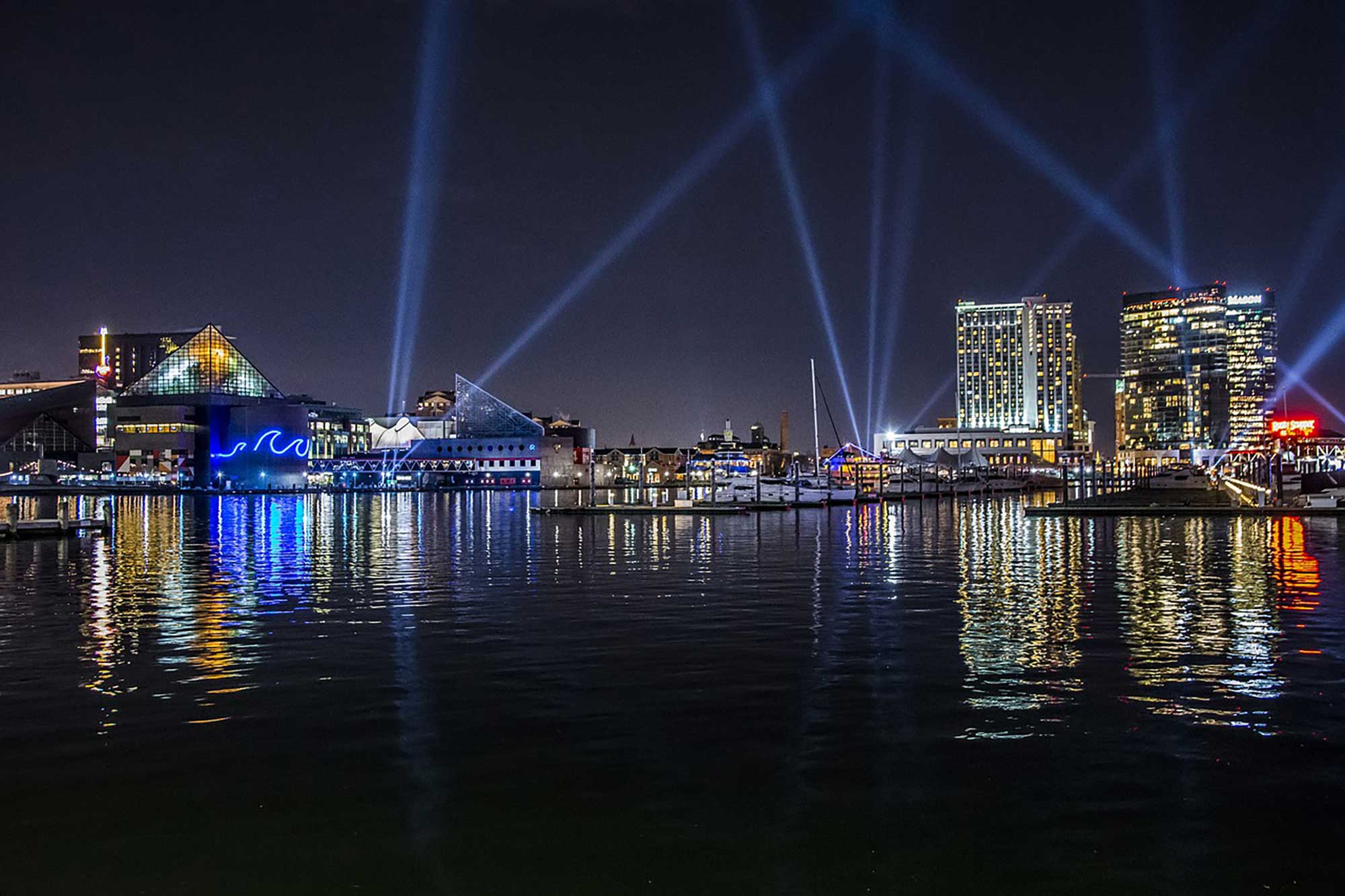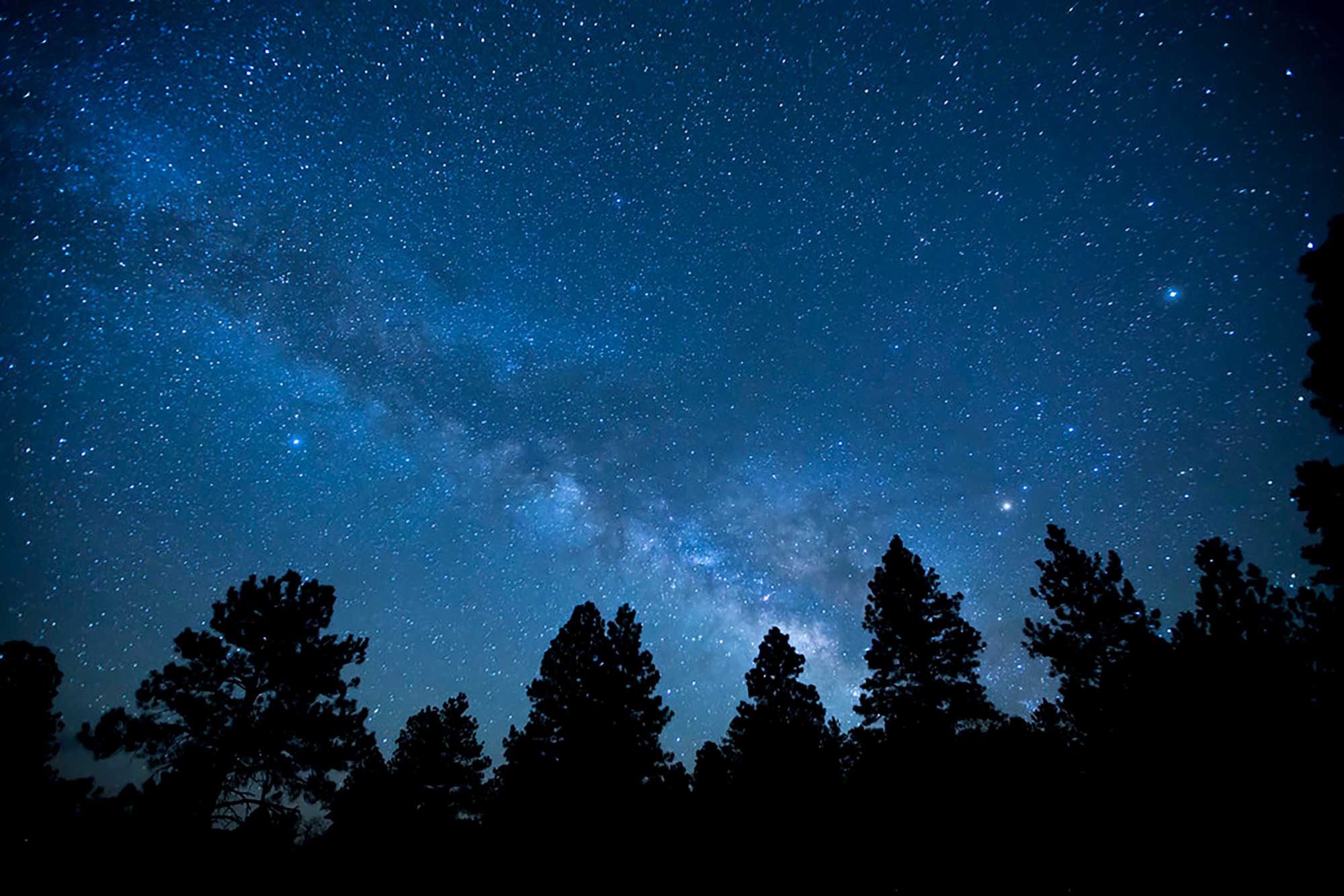When we talk about pollution, there’s a form of it that’s almost everywhere but gets relatively little coverage: light. Artificial lighting has become integral to our modern civilisation, however its excessive use is now harming health, disrupting ecosystems, and even interfering with humanity’s understanding of the universe. In this article, AKT II’s bioclimatic associate Mattia Donato highlights the scale of the problem, and talks through what we can do as designers to create a – metaphorically – brighter future.
It happens every night in virtually every urban centre.
Just before sunset, lights start to flicker on across every street and structure. Soon the entire built landscape, and eventually the sky itself, is glowing with an artificial excess of illumination. This is happening because traditionally we’ve lit everything we build and do, and the result is an immense wash of light, which then also illuminates our atmosphere.
Today, we measure this unnatural ‘sky glow’ using the Bortle scale: a numerical ranking that’s based on the intelligibility of ground-based astronomical observation. The scale ranges from zero (the best), up to nine (the worst). We can use it to quantify the overall light pollution at any location.

This photo shows a typical 'level nine' on the Bortle scale; we can't see the stars at all.

And this photo shows the ideal 'level zero', where the Milky Way is now clearly visible.
Light pollution essentially comes in three forms:
For human beings, any such unwanted light can cause both physiological and functional problems. At the most basic level, an excessive ambient urban light at night can interfere with our sleep, while a more extreme scenario might be a driver – or even a pilot – who’s suddenly unable to see because of an unexpected glare. It’s also been suggested that night-time exposure to artificial light can increase our risk of cancer, due to the melatonin (sleep hormone) disruption.
Sciences such as astronomy, amidst a serious urban sky glow, meanwhile become impossible.
Heavily industrialised and densely populated areas are generally the worst affected, with North America, Europe and Asia currently the most light-polluted regions globally. The interactive maps below show the present scale of the problem.
And in the UK, more than half of the population now can’t see the Milky Way when it should ordinarily be visible at night. This high level of light pollution is also now spreading through the rural areas too, as the infrastructure for artificial lighting becomes ever more efficient and available.
Ecosystems – both wildlife and plantlife – are equally affected. Nocturnal birds are disorientated by bright lights, and can even be induced into hormonal and physiological changes, while nocturnal insects can fly in the wrong direction or stop flying completely. Some plants will never reach bloom because the night feels too short. Others will flower prematurely.
And newborn sea turtles, which emerge onto the beachfront in darkness, no longer know which direction to crawl in, to reach the sea. Ordinarily, they would instinctively identify the ocean as the brightest (most reflective) object within their surroundings; man-made coastal developments are unfortunately now disrupting this behaviour.

In the UK, artificial light was thankfully introduced into a list of ‘statutory nuisances’ in 2005, as part of the national Clean Neighbourhoods and Environment Act. This existing legislation however only covers light nuisances, and doesn’t yet address light pollution at all. To deal with the latter, all we have currently is just some guidelines, which have been expertly provided by the Institute of Lighting Professionals (ILP), but aren’t yet being legally enforced.
Tackling light pollution properly moreover means making real and lasting changes within our human habits. For a start, we need to be using lighting more efficiently i.e. with less wastage of the light, to help minimise any unwanted effects. At the same time, we furthermore need to continue developing the planning and design frameworks that will help to enforce the restoration of Earth’s natural night-time state.
In the more immediate term, as designers of the built environment, we can certainly take some simple steps to help eliminate any causes of light pollution within our own work. Lighting should only be added where it’s needed, and with the minimum required brightness. Lights should be angled and shielded so that the illumination is directed downwards as much as possible, and sensors and timers should also be incorporated so that the light is only activated when it’s being used. Finally, warmer colour temperatures will help any remaining light to blend more readily with the Earth’s natural hues.
So, as an industry, there’s still a lot of opportunity for improvement within our approach to how light pollution is controlled.
That said, we’re already seeing some fantastic examples of innovation, such as this highway in Norway that’s been fitted with radar sensors that turn off the street lighting when no-one’s travelling through. We’re also now seeing coordinated organisations, at both the national and international level, who are now championing the natural night sky’s restoration. CieloBuio (Dark Sky) in Italy, and the International Dark Sky Association, are just two such bodies that are already doing brilliant work.
It looks like darker times are ahead, and for once, this is uplifting news.

All of these insights and ideas are already being explored by AKT II’s in-house bioclimatic design team. To learn more about the value that we’re bringing to the built world, contact our team.
[email protected]